Throughout history, building facades have served as the face of architectural design, showcasing a blend of functionality and aesthetic appeal. These external walls play a crucial role in defining a building’s character, creating a first impression, and enhancing the overall environment in which they are situated. From ancient structures to modern skyscrapers, the evolution of building facades has been a testament to the innovation and creativity of architects and designers worldwide. One of the primary functions of a building facade is to provide protection against the elements. Whether it’s harsh sunlight, heavy rain, or extreme temperatures, the facade acts as a shield, safeguarding the interior spaces and occupants from external forces. In regions with fluctuating weather conditions, facades are designed to be durable and weather-resistant, ensuring the longevity of the building. In addition to their protective role, building facades also contribute significantly to the energy efficiency of a structure. By incorporating features such as insulation, shading devices, and ventilation systems, designers can optimize the facade to reduce energy consumption and create a more sustainable building. With the growing focus on environmental conservation and energy efficiency, facades play a key role in promoting green building practices and reducing the overall carbon footprint of a structure. Beyond their practical functions, building facades are also a canvas for artistic expression and architectural creativity. Through the use of materials, textures, colors, and patterns, designers have the opportunity to transform a simple wall into a work of art. From intricate ornamentation on historic buildings to sleek, minimalist designs on contemporary structures, facades have the power to evoke emotion, tell a story, and enhance the visual appeal of a building. The choice of materials is a critical aspect of facade design, as it not only influences the aesthetic quality of the building but also impacts its performance and maintenance requirements. Traditional materials such as brick, stone, and wood have long been used in facade construction for their durability and timeless appeal. However, advancements in technology have introduced a wide range of innovative materials, such as glass, metal, and composite panels, that offer new possibilities for creative expression and design flexibility. Glass facades, in particular, have gained popularity in modern architecture for their transparency, lightness, and ability to create a seamless connection between the interior and exterior spaces. This type of facade allows natural light to flood the building, creating a bright and open atmosphere while also providing panoramic views of the surrounding environment. Glass facades can be customized with various coatings and patterns to control solar heat gain, glare, and privacy, making them a versatile choice for commercial, residential, and institutional buildings. Metal facades, on the other hand, offer a more robust and industrial aesthetic, making them a popular choice for contemporary buildings and urban environments. Metal panels can be fabricated in a variety of finishes, including stainless steel, aluminum, and copper, to achieve different textures and colors.

.
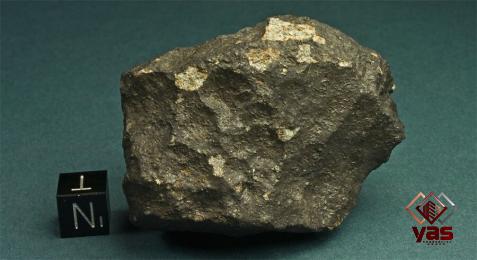 Additionally, metal facades are known for their durability, low maintenance requirements, and recyclability, making them a sustainable choice for eco-conscious projects. Composite panels, which consist of layers of different materials bonded together, offer a cost-effective solution for facade construction while providing a high level of design flexibility. These panels can mimic the appearance of natural materials such as wood, stone, or marble, giving designers the freedom to experiment with textures and colors without the added weight and maintenance issues associated with traditional materials. The design of a building facade is not limited to the choice of materials but also encompasses elements such as fenestration, detailing, and proportions. Fenestration, or the arrangement of windows and openings on a facade, plays a crucial role in shaping the building’s appearance, controlling natural light, and ventilation, and enhancing the overall user experience. By carefully considering the size, shape, and placement of windows, designers can create visual interest, improve interior comfort, and optimize energy performance. Detailing, such as moldings, cornices, and ornamentation, adds richness and depth to a facade, creating a sense of craftsmanship, heritage, and identity. These decorative elements can be subtle or elaborate, depending on the architectural style and context of the building. In historic preservation projects, detailing plays a crucial role in restoring the original character of a facade while incorporating modern technologies and materials to ensure its longevity. Proportions, the relationship between different elements of a facade, are essential in creating a harmonious and visually pleasing composition. Symmetry, balance, and scale are key principles that guide the design process and help architects achieve a cohesive and well-proportioned facade. By carefully studying the site, surrounding context, and building program, designers can develop a facade that responds to its environment, enhances the urban fabric, and creates a memorable architectural statement. In conclusion, building facades are not merely external walls but an integral part of architectural design that combines functionality, aesthetics, and sustainability.
Additionally, metal facades are known for their durability, low maintenance requirements, and recyclability, making them a sustainable choice for eco-conscious projects. Composite panels, which consist of layers of different materials bonded together, offer a cost-effective solution for facade construction while providing a high level of design flexibility. These panels can mimic the appearance of natural materials such as wood, stone, or marble, giving designers the freedom to experiment with textures and colors without the added weight and maintenance issues associated with traditional materials. The design of a building facade is not limited to the choice of materials but also encompasses elements such as fenestration, detailing, and proportions. Fenestration, or the arrangement of windows and openings on a facade, plays a crucial role in shaping the building’s appearance, controlling natural light, and ventilation, and enhancing the overall user experience. By carefully considering the size, shape, and placement of windows, designers can create visual interest, improve interior comfort, and optimize energy performance. Detailing, such as moldings, cornices, and ornamentation, adds richness and depth to a facade, creating a sense of craftsmanship, heritage, and identity. These decorative elements can be subtle or elaborate, depending on the architectural style and context of the building. In historic preservation projects, detailing plays a crucial role in restoring the original character of a facade while incorporating modern technologies and materials to ensure its longevity. Proportions, the relationship between different elements of a facade, are essential in creating a harmonious and visually pleasing composition. Symmetry, balance, and scale are key principles that guide the design process and help architects achieve a cohesive and well-proportioned facade. By carefully studying the site, surrounding context, and building program, designers can develop a facade that responds to its environment, enhances the urban fabric, and creates a memorable architectural statement. In conclusion, building facades are not merely external walls but an integral part of architectural design that combines functionality, aesthetics, and sustainability.
..
 From their role in protecting the interior spaces to their ability to enhance the visual appeal of a building, facades play a multifaceted role in defining the character and identity of a structure. By embracing innovation, creativity, and responsible design practices, architects and designers can create facades that inspire, engage, and endure for generations to come. Building facades serve as the first point of contact between a building and its surroundings, making a lasting impression on residents, visitors, and passersby. The design of a facade can communicate the purpose, values, and identity of a building while also contributing to the overall aesthetic quality of the built environment. Whether it’s a historic landmark, a cutting-edge skyscraper, or a sustainable residential complex, the facade plays a critical role in shaping the urban fabric and enriching the architectural landscape. In urban settings, building facades often interact with the surrounding environment, creating a dialogue between the built form and the cityscape. Facades can reflect the rhythm, scale, and materiality of neighboring buildings, establishing a sense of continuity and unity within the urban context. By responding to the historical context, cultural heritage, and urban design guidelines, architects can create facades that blend seamlessly with their surroundings while also introducing a contemporary design language that adds vibrancy and diversity to the cityscape. The design of a building facade is a dynamic and collaborative process that involves architects, engineers, developers, and other stakeholders working together to achieve a common vision. Through interdisciplinary collaboration, innovative technologies, and sustainable design principles, project teams can push the boundaries of facade design and construction, creating buildings that are not only visually striking but also high-performing and environmentally responsible. Sustainability is a key consideration in modern facade design, as architects and designers strive to reduce the environmental impact of buildings and promote energy efficiency. Sustainable facades are designed to minimize heat gain, reduce cooling loads, and optimize natural daylighting, thereby lowering energy consumption and greenhouse gas emissions. By incorporating features such as solar shading devices, high-performance glazing, and green roofs, designers can enhance the thermal performance of a facade and create a healthier, more comfortable indoor environment for occupants.
From their role in protecting the interior spaces to their ability to enhance the visual appeal of a building, facades play a multifaceted role in defining the character and identity of a structure. By embracing innovation, creativity, and responsible design practices, architects and designers can create facades that inspire, engage, and endure for generations to come. Building facades serve as the first point of contact between a building and its surroundings, making a lasting impression on residents, visitors, and passersby. The design of a facade can communicate the purpose, values, and identity of a building while also contributing to the overall aesthetic quality of the built environment. Whether it’s a historic landmark, a cutting-edge skyscraper, or a sustainable residential complex, the facade plays a critical role in shaping the urban fabric and enriching the architectural landscape. In urban settings, building facades often interact with the surrounding environment, creating a dialogue between the built form and the cityscape. Facades can reflect the rhythm, scale, and materiality of neighboring buildings, establishing a sense of continuity and unity within the urban context. By responding to the historical context, cultural heritage, and urban design guidelines, architects can create facades that blend seamlessly with their surroundings while also introducing a contemporary design language that adds vibrancy and diversity to the cityscape. The design of a building facade is a dynamic and collaborative process that involves architects, engineers, developers, and other stakeholders working together to achieve a common vision. Through interdisciplinary collaboration, innovative technologies, and sustainable design principles, project teams can push the boundaries of facade design and construction, creating buildings that are not only visually striking but also high-performing and environmentally responsible. Sustainability is a key consideration in modern facade design, as architects and designers strive to reduce the environmental impact of buildings and promote energy efficiency. Sustainable facades are designed to minimize heat gain, reduce cooling loads, and optimize natural daylighting, thereby lowering energy consumption and greenhouse gas emissions. By incorporating features such as solar shading devices, high-performance glazing, and green roofs, designers can enhance the thermal performance of a facade and create a healthier, more comfortable indoor environment for occupants.
…
 In addition to energy efficiency, sustainable facades also focus on the use of environmentally friendly materials, such as recycled content, low-emission finishes, and locally sourced products. By selecting materials with a low carbon footprint and high durability, architects can reduce the environmental impact of a building and contribute to the overall sustainability of the built environment. Green certifications, such as LEED, BREEAM, and Green Globes, provide a framework for evaluating the sustainability of building facades and promoting best practices in design, construction, and operation. Innovations in facade technology, such as dynamic facades, responsive materials, and smart building systems, are reshaping the way we think about building envelopes and their interaction with the environment. Dynamic facades, which adapt to changing environmental conditions, can optimize daylighting, ventilation, and thermal comfort, providing a responsive and adaptable solution for energy-efficient building design. Responsive materials, such as shape-memory alloys, electrochromic glass, and photovoltaic panels, can transform the appearance and performance of a facade in real-time, offering new possibilities for interactive and dynamic architecture. Smart building systems, powered by sensors, actuators, and artificial intelligence, are revolutionizing the way we monitor, control, and optimize building performance. Smart facades can respond to changes in occupancy, weather, and energy demand, adjusting their parameters to maximize comfort, efficiency, and occupant well-being. By integrating smart technologies into building facades, designers can create buildings that are responsive, efficient, and resilient, adapting to the needs of users and the environment in real-time. The future of building facades is shaped by innovation, collaboration, and sustainability, as architects and designers continue to push the boundaries of design excellence and environmental responsibility. By embracing new materials, technologies, and design strategies, architects can create facades that are not only visually stunning but also high-performing, resilient, and responsive to the needs of a rapidly changing world. From iconic skyscrapers to humble residential buildings, the facade remains a versatile canvas for architectural expression, storytelling, and functional innovation, embodying the spirit of creativity, ingenuity, and beauty in the built environment.
In addition to energy efficiency, sustainable facades also focus on the use of environmentally friendly materials, such as recycled content, low-emission finishes, and locally sourced products. By selecting materials with a low carbon footprint and high durability, architects can reduce the environmental impact of a building and contribute to the overall sustainability of the built environment. Green certifications, such as LEED, BREEAM, and Green Globes, provide a framework for evaluating the sustainability of building facades and promoting best practices in design, construction, and operation. Innovations in facade technology, such as dynamic facades, responsive materials, and smart building systems, are reshaping the way we think about building envelopes and their interaction with the environment. Dynamic facades, which adapt to changing environmental conditions, can optimize daylighting, ventilation, and thermal comfort, providing a responsive and adaptable solution for energy-efficient building design. Responsive materials, such as shape-memory alloys, electrochromic glass, and photovoltaic panels, can transform the appearance and performance of a facade in real-time, offering new possibilities for interactive and dynamic architecture. Smart building systems, powered by sensors, actuators, and artificial intelligence, are revolutionizing the way we monitor, control, and optimize building performance. Smart facades can respond to changes in occupancy, weather, and energy demand, adjusting their parameters to maximize comfort, efficiency, and occupant well-being. By integrating smart technologies into building facades, designers can create buildings that are responsive, efficient, and resilient, adapting to the needs of users and the environment in real-time. The future of building facades is shaped by innovation, collaboration, and sustainability, as architects and designers continue to push the boundaries of design excellence and environmental responsibility. By embracing new materials, technologies, and design strategies, architects can create facades that are not only visually stunning but also high-performing, resilient, and responsive to the needs of a rapidly changing world. From iconic skyscrapers to humble residential buildings, the facade remains a versatile canvas for architectural expression, storytelling, and functional innovation, embodying the spirit of creativity, ingenuity, and beauty in the built environment.
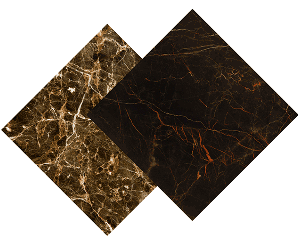
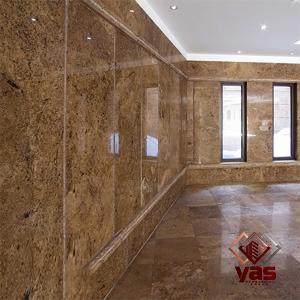




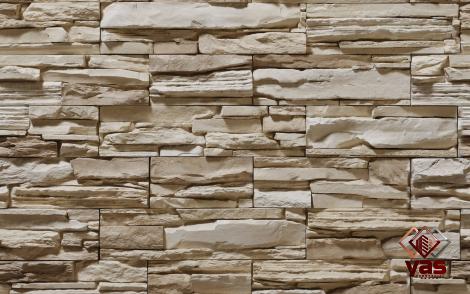
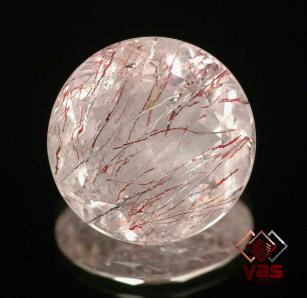



Your comment submitted.